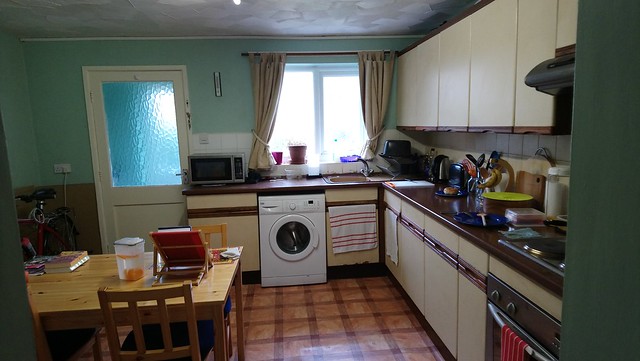The Italian word pavimento looks like the English word pavement, but actually means floor. Let’s find out more.
Pavimento [pa.viˈmen.to] comes from Latin pavīmentum (a floor composed of small stones beaten down) from paviō (to beat, strike, ram, tread down), from Proto-Indo-European *peh₂w- (to strike, hit) [source].
Related words in Latin include pavīmentārius (floor-maker, who makes the tiled ground), pavīmentō (to pave) and pavīcula (a rammer) [source].
Related words in Italian include pavimentare (to floor, to pave) and pavimentazione (flooring, paving).
Words from the same Latin / PIE roots in other languages include paviment (flooring, pavement) in Catalan, pavement and to pave in English, palmant (pavement) in Welsh, pavement (paving, tiled floor) and paver (to cobble, pave [Canada]) in French, pământ (earth, ground, land) in Romanian, pavimento (road surface, paving) in Spanish, and pļaut (to mow, reap, shoot intensively) in Latvian [source].
The English word pavement can refer to:
- A paved surface; a hard covering on the ground.
- A paved path, for the use of pedestrians, located at the side of a road (mainly in the UK, Ireland and South Africa) – known as a sidewalk in North America, a banquette in Louisiana and Texas in the USA, and as a footpath in Australia, New Zealand and India
- A paving (paved part) of a road or other thoroughfare; the roadway or road surface. (mainly in North America)
- The paved part of an area other than a road or sidewalk, such as a cobblestone plaza, asphalt schoolyard or playground, or parking lot. (mainly in North America)
- The interior flooring of a church sanctuary, between the communion rail and the altar. [source].
Pavements / sidewalks have been around for a many thousands of years. There were pavements in Ancient Greece and Rome, for example, and the Romans called them sēmite (narrow way, footpath, path, pathway) [source], which comes from PIE *swé(d) (by oneself, away, without) + *mey- ((ex)change). Words from the same roots include senda (footpath) in Catalan, sente (footpath, track, trail) in French, and senda (footpath) in Spanish [source].
Are there other words for pavement / sidewalk in English?



















